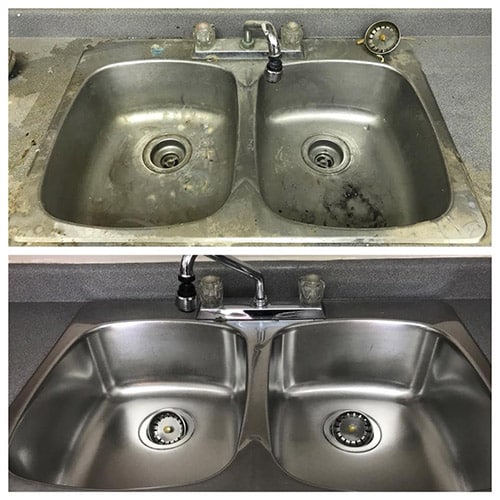Epsom salt, chemically known as magnesium sulfate, has been a household staple for centuries, prized not only for its therapeutic properties but also for its versatility in various applications.
This humble compound, named after the English town of Epsom where it was first discovered, has found its way into bathrooms, gardens, kitchens, and more. In this article, we will explore 15 wonderful ways to use Epsom salt, their benefits, and that you need to know.
Table of contents
What is Epsom Salt?
Epsom salt, chemically known as magnesium sulfate, is a naturally occurring mineral compound consisting of magnesium, sulfur, and oxygen. It derives its name from the town of Epsom in Surrey, England, where it was first discovered in the early 17th century.
Epsom salt has gained popularity for its various uses, ranging from therapeutic and cosmetic applications to household and gardening purposes.
Composition
- Magnesium: This essential mineral plays a crucial role in various bodily functions, including muscle and nerve function, enzyme activation, and the maintenance of a healthy immune system. The human body can absorb magnesium through both the digestive system and the skin.
- Sulfur: Sulfur is another vital element found in Epsom salt. It is involved in the formation of amino acids and proteins, contributing to overall cellular health. Sulfur also has known detoxifying properties.
What are the Forms of Epsom Salt?
Epsom salt typically comes in two main forms:
- Crystals or Granules: These are the most common and versatile form of Epsom salt. They dissolve easily in water, making them suitable for various applications such as baths, scrubs, and gardening.
- Epsom Salt Lotion or Oil: Some formulations include Epsom salt in lotions or oils, allowing for topical application. This can be convenient for targeted relief, such as massaging sore muscles.
Read Also: How Dryer Sheets Work ? Full Tips and Guidelines
How Does it Work?
Epsom salt works through the properties of its two main components: magnesium and sulfate. These elements play essential roles in various biological processes, both within the human body and in other applications.
Understanding how it works involves exploring the effects of magnesium and sulfate on the body, as well as their contributions to other uses such as gardening and cleaning.
Magnesium Absorption Through the Skin
One of the primary ways Epsom salt works is through the absorption of magnesium by the skin. When Epsom salt is dissolved in warm water, the magnesium and sulfate ions separate.
- Muscle Relaxation: Magnesium is a natural muscle relaxant. When absorbed through the skin during a bath or topical application, it can help relax muscles and alleviate tension. This is beneficial for individuals experiencing muscle soreness, cramps, or general muscle fatigue.
- Stress Reduction: Magnesium also has a calming effect on the nervous system. By promoting the production of neurotransmitters like serotonin, it contributes to stress reduction and relaxation. Hence, Epsom salt baths are often recommended for relaxation and stress relief.
- Improved Sleep: The relaxation induced by magnesium can contribute to better sleep quality. Incorporating Epsom salt into a bedtime routine, such as a warm bath, may help relax the body and mind, potentially aiding in a more restful sleep.
Sulfate’s Detoxification Properties
The sulfate component of Epsom salt, like the sulfate ions (SO₄²⁻), is also integral to its functionality.
- Detoxification: Sulfate plays a role in the detoxification processes of the body. It assists in the removal of toxins and waste products, promoting overall cellular health. This detoxification process is thought to occur when sulfate is absorbed through the skin during a bath.
Laxative Effect When Taken Orally
When taken orally, it can act as a mild laxative due to its osmotic properties.
- Osmotic Laxative: The magnesium sulfate in Epsom salt draws water into the intestines, softening the stool and promoting bowel movements. This osmotic effect can be effective in relieving constipation when taken following proper guidelines and under the supervision of a healthcare professional.
Cleaning and Scouring Properties
Epsom salt’s coarse texture makes it effective for cleaning.
- Scouring Agent: When combined with other household ingredients, Epsom salt can serve as a natural scouring agent. Its abrasive nature helps break down stains and grime on surfaces like sinks, tubs, and tiles, making it a useful component in DIY cleaning solutions.
What are the Benefits?
It offers a range of benefits across various applications and here are some of the key benefits of Epsom salt:
- Muscle and Joint Relief
- Improved Sleep Quality
- Stress Reduction and Relaxation
- Natural Exfoliation for Skin
- Detoxification
- Laxative Effect
- Pest Deterrent in Gardening
- Hair and Scalp Health
Read Also: How To Get Mildew Out Of Clothes In Less Time
15 Ways to Use Epsom Salts
Epsom salt a part of your daily routine can add a whole lot of goodness to your way of life. Therefore, here are 15 amazing ways it could add a little glitz to your everyday life.
Therapeutic Uses
Epsom salt has been used for therapeutic purposes for centuries, known for its potential health benefits, particularly in promoting relaxation, relieving muscle tension, and supporting overall well-being.
Here are some key Epsom salt uses for therapy:
#1. Relaxing Epsom Salt Baths
- How to Use: Dissolve Epsom salt in warm bathwater and soak for at least 15-20 minutes.
- Benefits: The warm water combined with the magnesium absorption through the skin can help relax muscles, alleviate stress, and promote a sense of calm. This is a popular method for overall relaxation and stress reduction.
#2. Compress for Aches and Pains
- How to Use: Dissolve Epsom salt in warm water, soak a cloth, and apply as a compress.
- Benefits: Applying an Epsom salt compress to specific areas of the body can help alleviate localized pain, such as joint pain or muscle soreness. The compress can be applied for 15-20 minutes.
#3. Improved Sleep
- How to Use: Take an Epsom salt bath before bedtime.
- Benefits: The magnesium in this salt promotes relaxation and can contribute to improved sleep quality. Using Epsom salt as part of a bedtime routine may help individuals unwind and prepare for a restful night’s sleep.
#4. Stress Reduction
- How to Use: Add Epsom salt to a warm bath or foot soak regularly.
- Benefits: Regular use of Epsom salt in baths or foot soaks can contribute to ongoing stress reduction and overall relaxation. It becomes a part of a self-care routine for managing stress.
Household and Gardening Applications
Epsom salt is a versatile and affordable household item that can be used for various purposes. Here are several useful ways to incorporate Epsom salt into your household routine.
#5. Cleaning Scrub
- How to Use: Mix Epsom salt with liquid dish soap or castile soap to create a natural and effective cleaning scrub. This can be used to scrub surfaces like sinks, tubs, and tiles.
- Benefits: The abrasive texture of Epsom salt helps break down stains and grime, providing a gentle yet efficient cleaning solution.
#6. Fabric Softener Crystals
- How to Use: Add a tablespoon to your laundry as a natural fabric softener. It helps soften clothes and reduce static cling.
- Benefits: It provides a cost-effective and chemical-free alternative to commercial fabric softeners, suitable for individuals with sensitive skin.
#7. Garden Booster
- How to Use: Dissolve in water and use it to water your plants. This provides magnesium, promoting healthier and more vibrant plant growth.
- Benefits: It serves as a natural fertilizer, supporting plant development and aiding in nutrient absorption.
Beauty
Epsom salt can be a valuable addition to your beauty routine, offering various benefits for skincare and hair care. Here are several ways to incorporate Epsom salt into your beauty routine.
#8. Exfoliating Body Scrub
- How to Use: Mix Epsom salt with your favorite carrier oil (such as olive oil or coconut oil) to create an exfoliating body scrub. Gently massage the mixture onto damp skin in circular motions, focusing on rough areas like elbows and knees. Rinse thoroughly.
- Benefits: Exfoliation helps remove dead skin cells, leaving your skin smoother and more radiant. The magnesium in Epsom salt can also contribute to skin health.
#9. Foot Soak for Soft Feet
- How to Use: Dissolve Epsom salt in warm water and soak your feet for 15-20 minutes. You can enhance the experience by adding a few drops of your favorite essential oil.
- Benefits: Epsom salt foot soaks can help soften rough skin, relieve foot aches, and provide overall relaxation. The magnesium is absorbed through the skin, promoting muscle relaxation.
#10. Acne Spot Treatment
- How to Use: Create a paste by mixing Epsom salt with a small amount of water. Apply the paste directly to acne-prone areas, leave it on for a few minutes, and then rinse.
- Benefits: Epsom salt’s exfoliating properties can help unclog pores, and its anti-inflammatory nature may aid in reducing the redness associated with acne.
#11. Hair Volume Boost
- How to Use: Combine Epsom salt with your regular conditioner and apply the mixture to your hair. Leave it on for 15 minutes before rinsing thoroughly.
- Benefits: Epsom salt can help remove excess oil and product buildup from the scalp, contributing to healthier and more voluminous hair.
See this: How to Get Dry Erase Marker Out Of Clothes | Full Guide
#12. Relaxing Bath Soak for Glowing Skin
- How to Use: Add a cup of Epsom salt to your bathwater and soak for at least 15-20 minutes.
- Benefits: Epsom salt baths promote relaxation, relieve muscle tension, and can contribute to overall skin health. The magnesium is absorbed through the skin, helping to nourish and revitalize your skin.
#13. Lip Scrub for Soft Lips
- How to Use: Mix a small amount of Epsom salt with coconut oil and gently rub it on your lips. Rinse off to reveal smoother, softer lips.
- Benefits: Exfoliating your lips with Epsom salt removes dry, flaky skin, leaving your lips looking and feeling more supple.
#14. Anti-Dandruff Scalp Treatment
- How to Use: Mix Epsom salt with your regular shampoo and massage it into your scalp. Leave it on for a few minutes before rinsing.
- Benefits: Epsom salt can help exfoliate the scalp, reduce dandruff, and promote a healthier scalp environment.
#15. Reduction of Dark Circles and Puffiness
- How to Use: Dissolve a small amount of Epsom salt in warm water, soak cotton pads in the solution, and place them on closed eyes.
- Benefits: The soothing properties of Epsom salt can help reduce puffiness and inflammation around the eyes, potentially minimizing the appearance of dark circles.
Side Effects
While Epsom salt is generally considered safe for most people when used as directed, it’s important to be aware of potential side effects, especially if used in excess or in certain circumstances. Here are some considerations:
- Allergic Reactions
- Digestive Issues
- Dehydration
- Impaired Kidney Function
- Skin Irritation
Are there Precautions I Should take?
While Epsom salt is generally considered safe for external use and occasional oral consumption, it’s essential to exercise caution. Excessive use can lead to magnesium toxicity, and ingesting Epsom salt should always be done following proper guidelines and under the guidance of a healthcare professional.
Related Article: 20 Amazing Uses for Baking Soda
Frequently Asked Questions
Epsom salt is generally well-tolerated, but individuals with sensitive skin should perform a patch test before using Epsom salt-based skincare products to ensure there are no adverse reactions.
Epsom salt can be used in hair care routines for various hair types. However, individuals with dry or damaged hair may want to use it more sparingly to avoid further drying.
Epsom salt can be safe for children when used in moderation and under proper supervision.
The frequency of Epsom salt baths depends on individual needs and preferences. For general relaxation, a weekly soak may be sufficient. Athletes or those with muscle and joint pain may benefit from more frequent use, but it’s essential to pay attention to how your body responds.
While Epsom salt is considered safe for occasional use as a laxative when taken orally following package instructions, regular and excessive consumption can lead to magnesium toxicity. It is essential to consult with a healthcare professional before using Epsom salt internally.
Conclusion
Epsom salts are truly a versatile and affordable addition to your home. From enhancing your beauty routine to promoting plant growth, the applications are endless. So, the next time you reach for a bag of Epsom salts, remember the magic they hold and the myriad ways they can enrich your life. Here’s to many more years of discovering their incredible uses!
References
- Seasalt.com – EPSOM SALT USES & BENEFITS
- Healthline.com – Epsom Salt: Benefits, Uses, and Side Effects
- Medicalnewstoday.com





